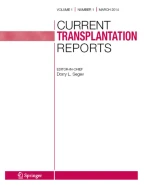
The concept of an NLRB has been considered since the institution of the Model for End-Stage Liver Disease (MELD) score liver allocation system, though barriers included concerns over logistics and loss of local control. Recently, increased volume of exceptions combined with an increased transplant rate for exception versus non-exception patients and growing concern over inequality within the regional system led to a reconsideration of an NLRB. A proposal was recently approved by the Governing Board of the Organ Procurement and Transplantation Network (OPTN) which includes the specific structure (three separate boards including one for pediatric cases, one for hepatocellular carcinoma, and one for all other exceptions), as well as a significant change to the exception scores, which will be set either at or just below the median MELD at the time of transplantation (MMaT).
This system may improve efficiency and consistency across the regions and improve the disparity between exception and non-exception patients awaiting transplantation in the USA.
This is a preview of subscription content, log in via an institution to check access.